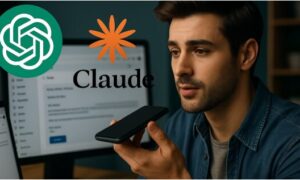Part 1: Who owns ChatGPT?
ChatGPT is owned by OpenAI LP, which is a for-profit subsidiary of OpenAI Incorporated. OpenAI was originally organized as a hybrid of a non-profit and a for-profit organization to balance the requirements of raising investment capital and maintaining control over its intellectual property.
Part 2: Elon Musk’s Departure from OpenAI
Elon Musk, a co-founder of OpenAI, has distanced himself from the organization. Musk’s departure came after Microsoft’s multibillion-dollar investment in OpenAI. He was dissatisfied with the direction the company was heading, stating that it had deviated from its original mission to be an open-source nonprofit and had become a “closed source, maximum-profit company effectively controlled by Microsoft.” Musk no longer owns a stake in OpenAI and has no control over it.
Part 3: How to Access ChatGPT
To access ChatGPT, you can go to chat.openai.com. There you can either sign up with a new account or log in if you already have one. You can create an account using an email address or use your Google or Microsoft account. You’ll also need to enter your phone number.
Once you’ve signed up and logged in, you’ll be able to start chatting with ChatGPT by typing in the search bar at the bottom of the page. You can modify your questions, provide feedback on responses, and manage your chats.
The service is free to use, but there’s a paid subscription version, ChatGPT Plus, available for upgrade.
The most recent advancements in OpenAI’s GPT series are the GPT-3.5 and GPT-4 models. If you wish to explore further details, delve into this comprehensive guide about the latest GPT models.
Part 4: Key Professional Features of ChatGPT
- Smart Reply Suggestions:
ChatGPT can suggest quick reply options to common questions or requests. This can save time and enable fast responses. The user can select one of the suggestions or modify it as needed.
- Polite and Empathetic Responses:
ChatGPT is designed to respond in a polite, empathetic, and helpful manner. The responses are crafted to be respectful and courteous to the user.
- Knowledge Base Integration:
ChatGPT has been trained on a large volume of data which gives it a broad range of knowledge in many domains. This allows it to understand and respond to many types of questions. The knowledge base is continually being expanded and improved.
- Personalization:
ChatGPT allows some customization and personalization based on an individual user or use case. Its responses can be tailored to a specific customer service team, product, company, voice, and style. Its knowledge and replies can be adapted over time based on interactions.
- Continuous Learning:
ChatGPT is built on a self-supervised learning model which allows it to continuously learn and improve from new interactions, feedback, and data. As it is exposed to more conversations, its knowledge and responses become more nuanced and helpful.
- Domain Expertise:
In addition to broad knowledge in many areas, ChatGPT can gain specialized expertise in particular domains by being trained on data specific to that domain. This enables very tailored and knowledgeable responses for selected areas of focus.
- Integrations:
ChatGPT can be integrated into other workflows, systems, and environments. It offers APIs to embed the AI into mobile apps, messaging platforms, collaboration tools, and more. It can connect to existing data and systems for a customized solution.
- Analytics and Metrics:
ChatGPT provides metrics and analytics on usage, conversations, feedback, effectiveness, and more. This data can be used to further optimize the system and improve experiences. Analytics offer insights into how ChatGPT is being used and how well it is performing.



































